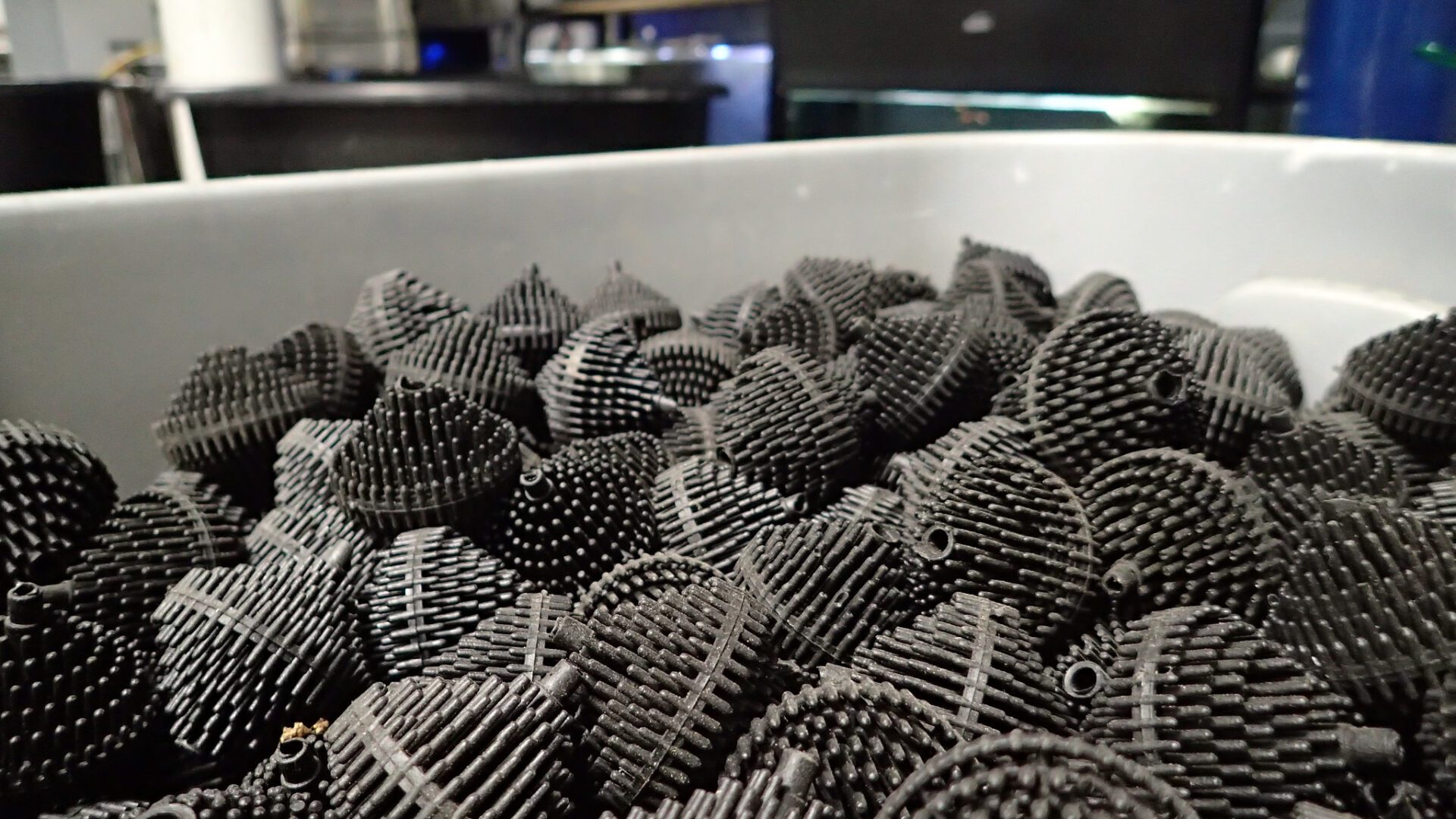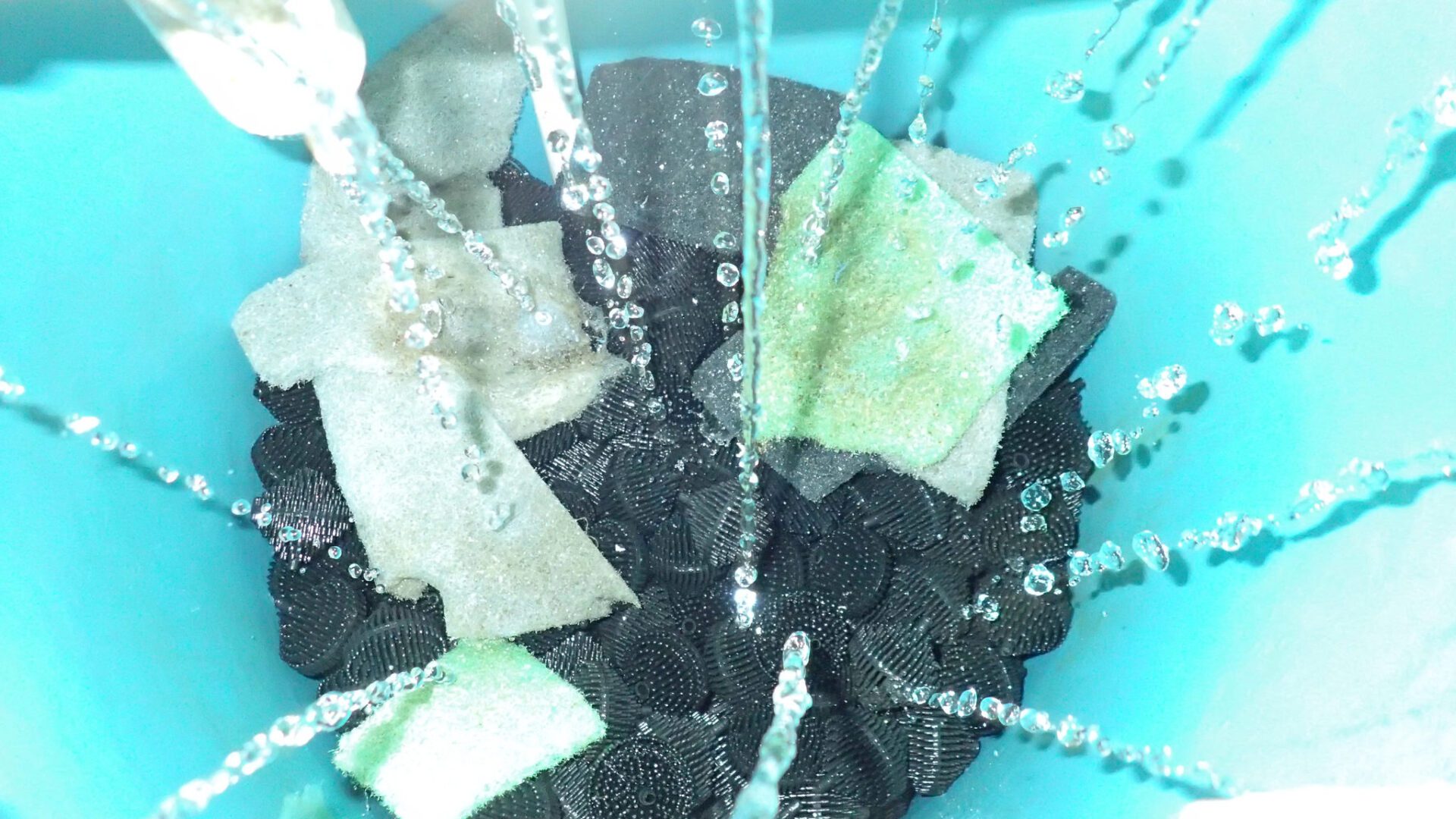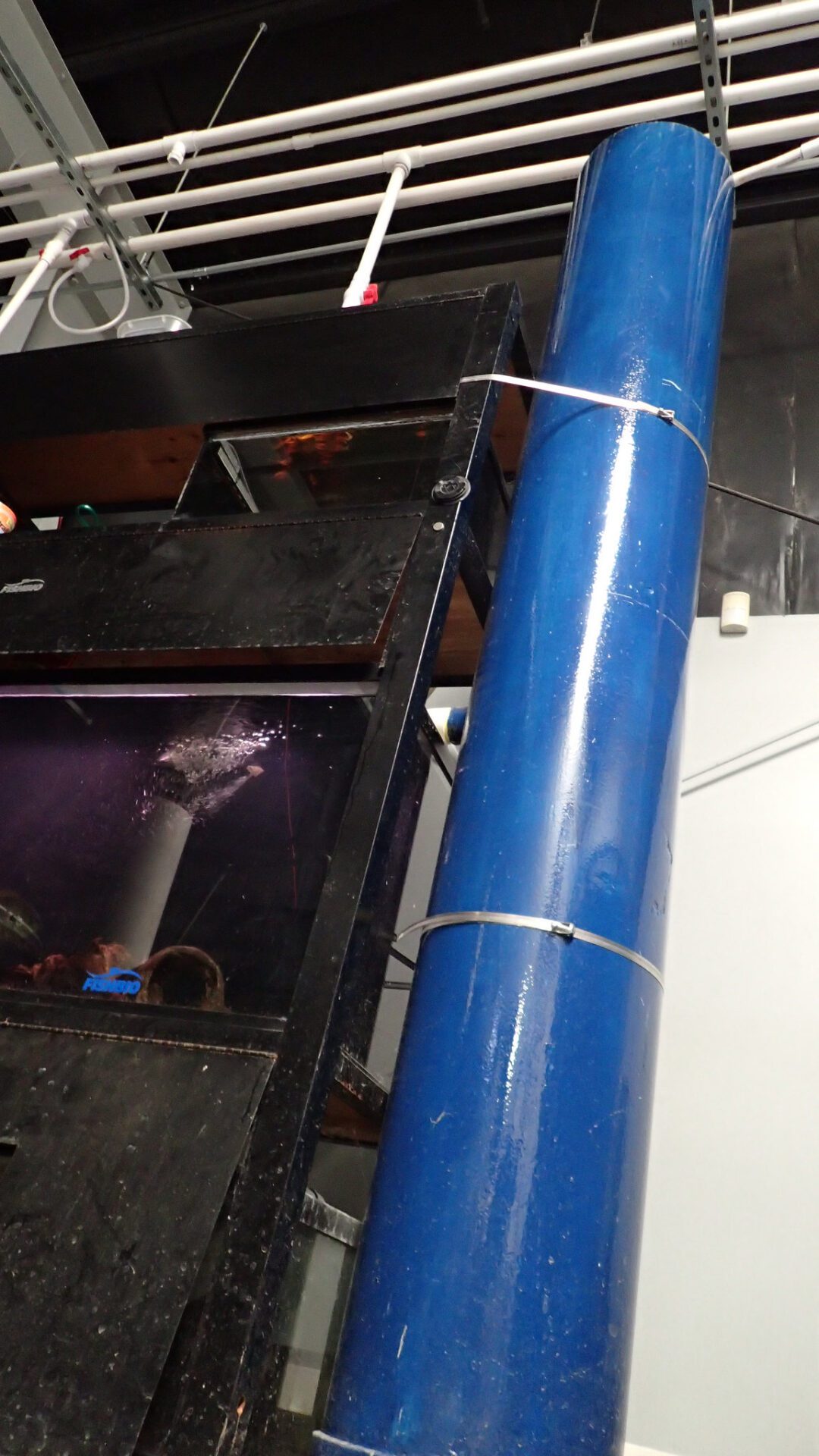Wednesday May 31, 2017
 As anyone with a home aquarium knows, just keeping fish alive can be a challenge. As we have relocated and rebuilt our fish-lab several times over the past few years, we continue to learn ways to make our system more efficient. When it comes to keeping aquatic organisms in a closed water system, like in our fish lab, you can never have too much filtration – and we’ve found that bio-filtration is the best. Bio-filtration works by using a healthy colony of microorganisms to break down fish waste, similar to what occurs naturally in a functioning ecosystem. The beneficial microbes require a surface to grow on and plenty of moving water.
As anyone with a home aquarium knows, just keeping fish alive can be a challenge. As we have relocated and rebuilt our fish-lab several times over the past few years, we continue to learn ways to make our system more efficient. When it comes to keeping aquatic organisms in a closed water system, like in our fish lab, you can never have too much filtration – and we’ve found that bio-filtration is the best. Bio-filtration works by using a healthy colony of microorganisms to break down fish waste, similar to what occurs naturally in a functioning ecosystem. The beneficial microbes require a surface to grow on and plenty of moving water.
For our system we used a large-diameter pipe sealed off at the bottom, positioned vertically and filled with bio-balls. Bio-balls are plastic spheres designed to provide enormous amounts of surface area for microbes. We pump water from our fish tanks to the top of the bio-filter and shower the water down through the column of bio-balls, then pump it back out to the tanks. An air diffuser under the bio-balls bubbles air up through the column as water cascades down over the balls. The air flowing up through the system helps with gas exchange, infusing oxygen into the water and expelling carbon dioxide and nitrogen gas. The air moving through the column of bio-balls also removes heat as evaporation occurs. After we installed the system, it took a couple of weeks for the beneficial microbes to get established; then, we noticed a significant drop in the water’s nitrite and nitrate levels, indicating the bacteria were hard at work. We continually strive to make our fish lab functioning smoothly to keep our test subjects happy and healthy.


